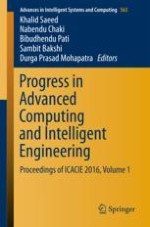The book focuses on both theory and applications in the broad areas of communication technology, computer science and information security. This two volume book contains the Proceedings of International Conference on Advanced Computing and Intelligent Engineering. These volumes bring together academic scientists, professors, research scholars and students to share and disseminate information on knowledge and scientific research works related to computing, networking, and informatics to discuss the practical challenges encountered and the solutions adopted. The book also promotes translation of basic research into applied investigation and convert applied investigation into practice.
